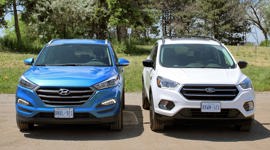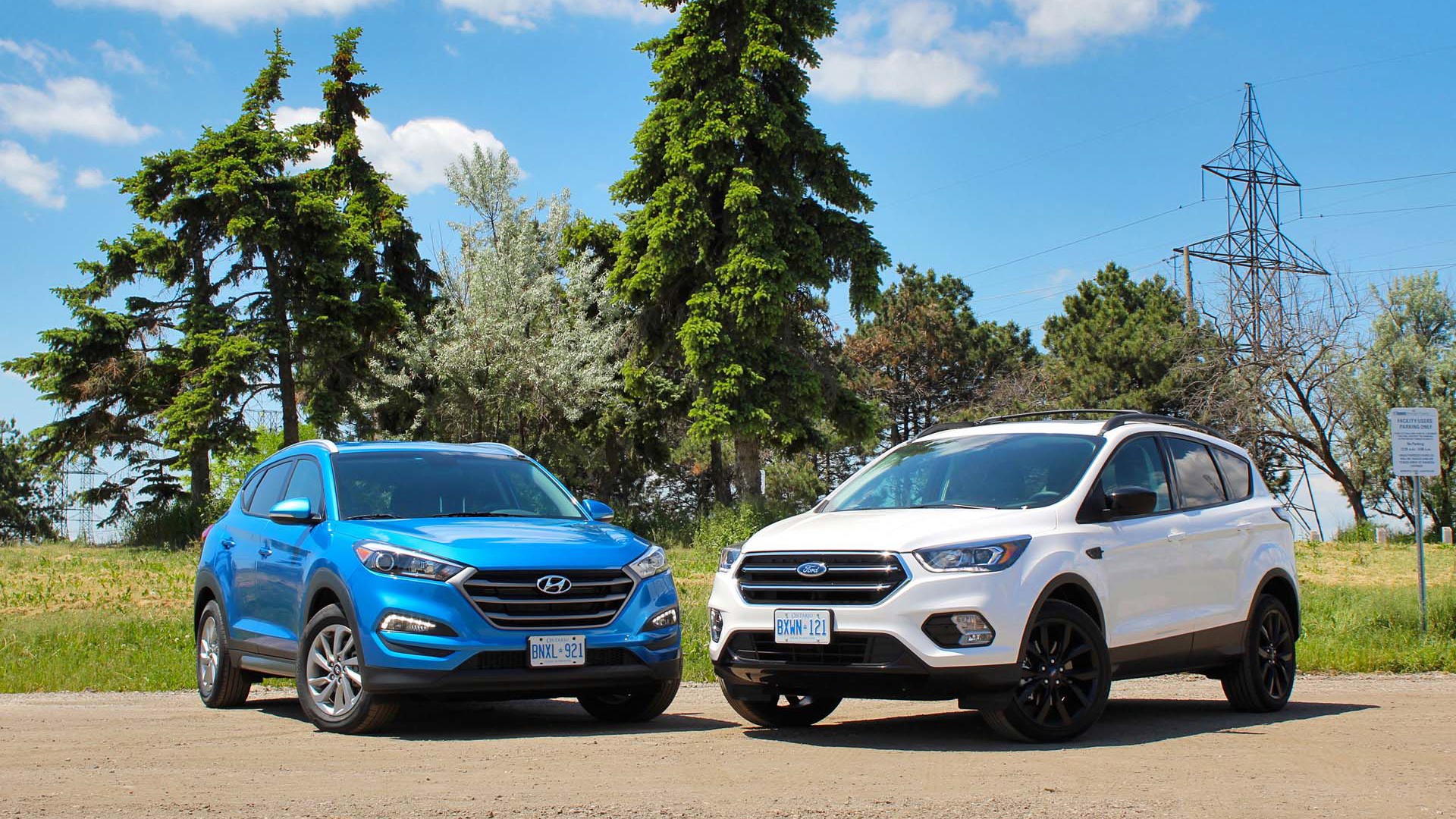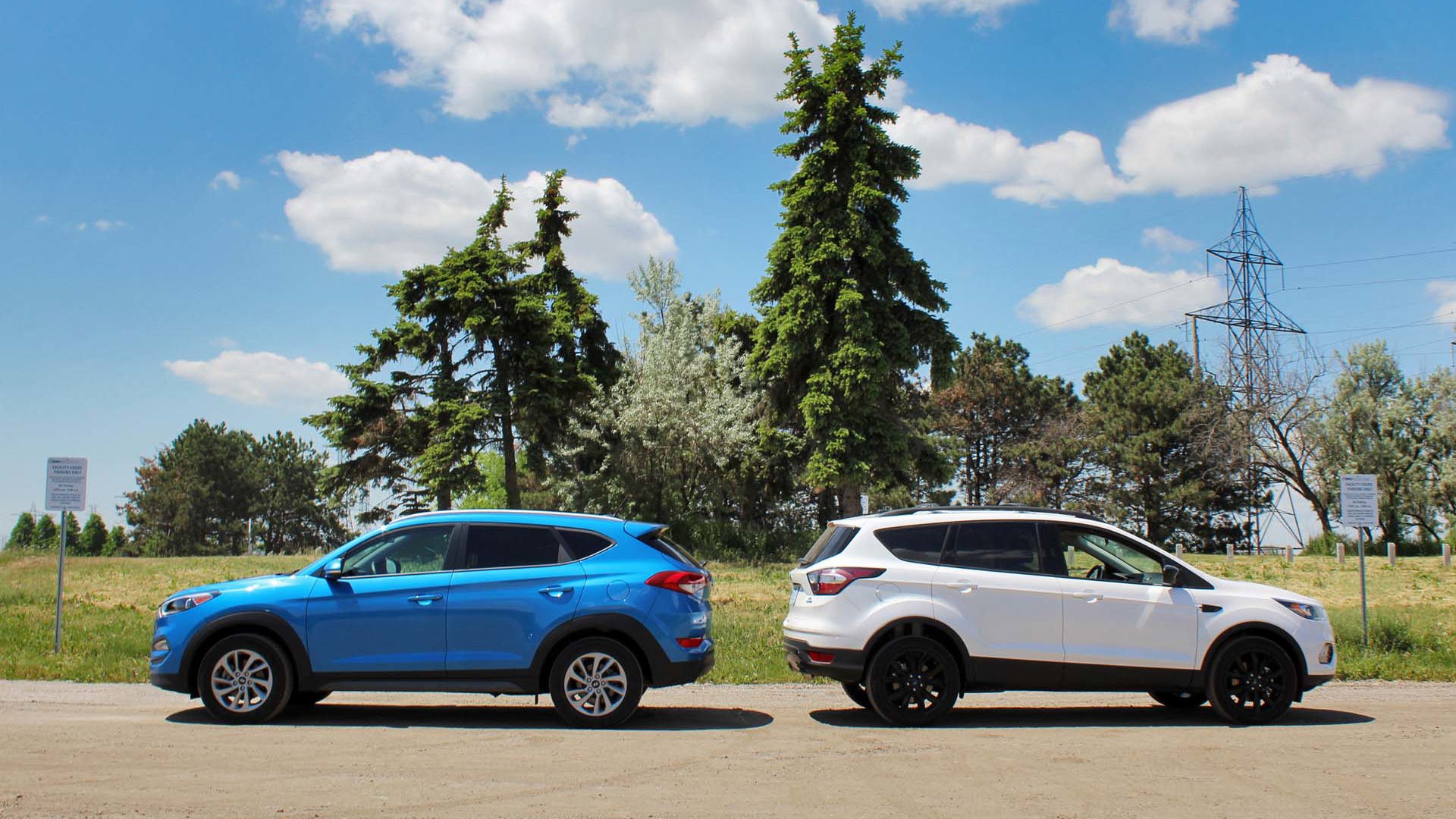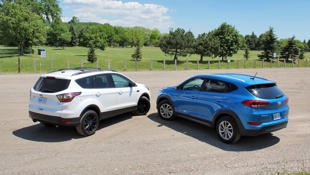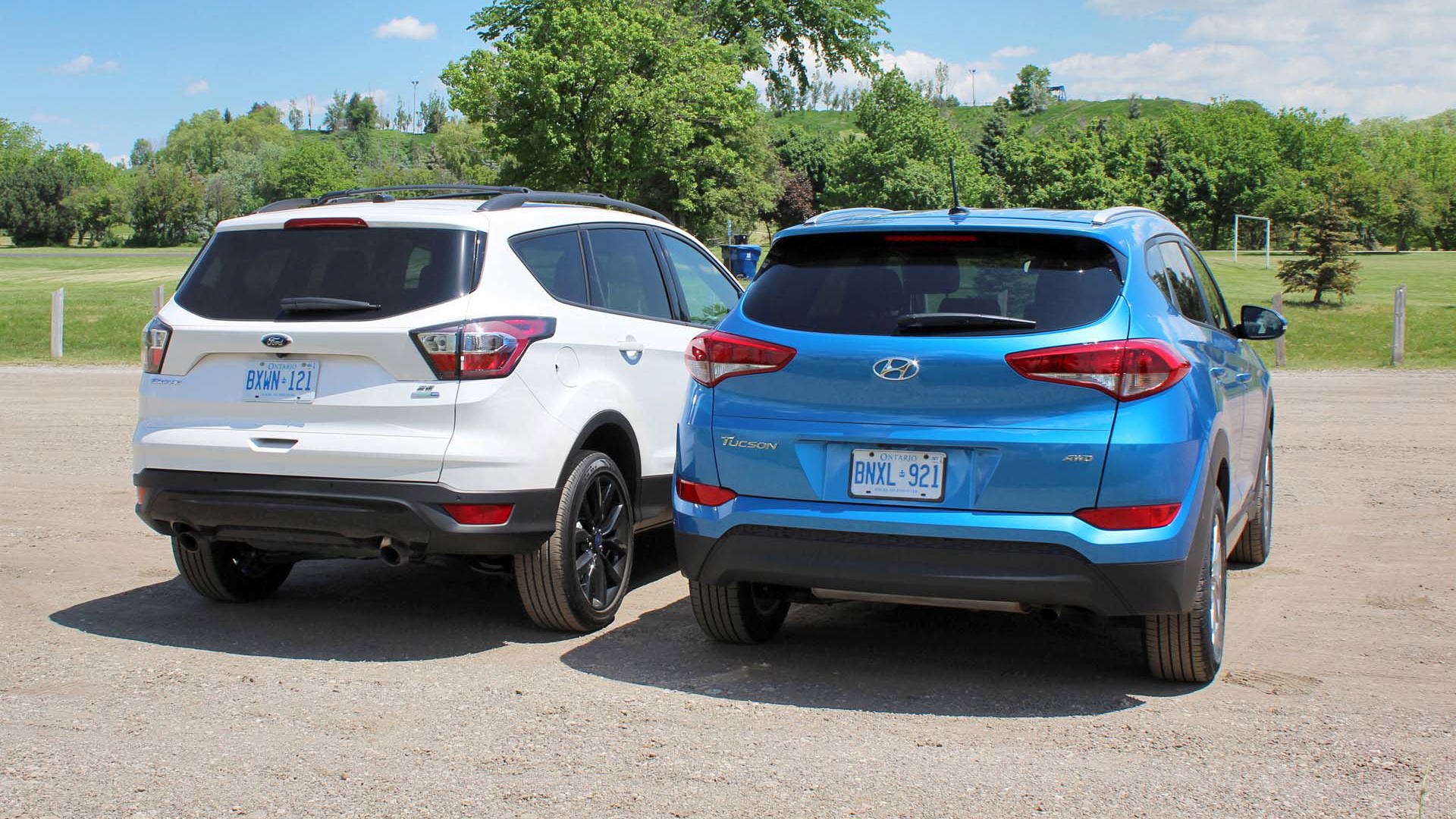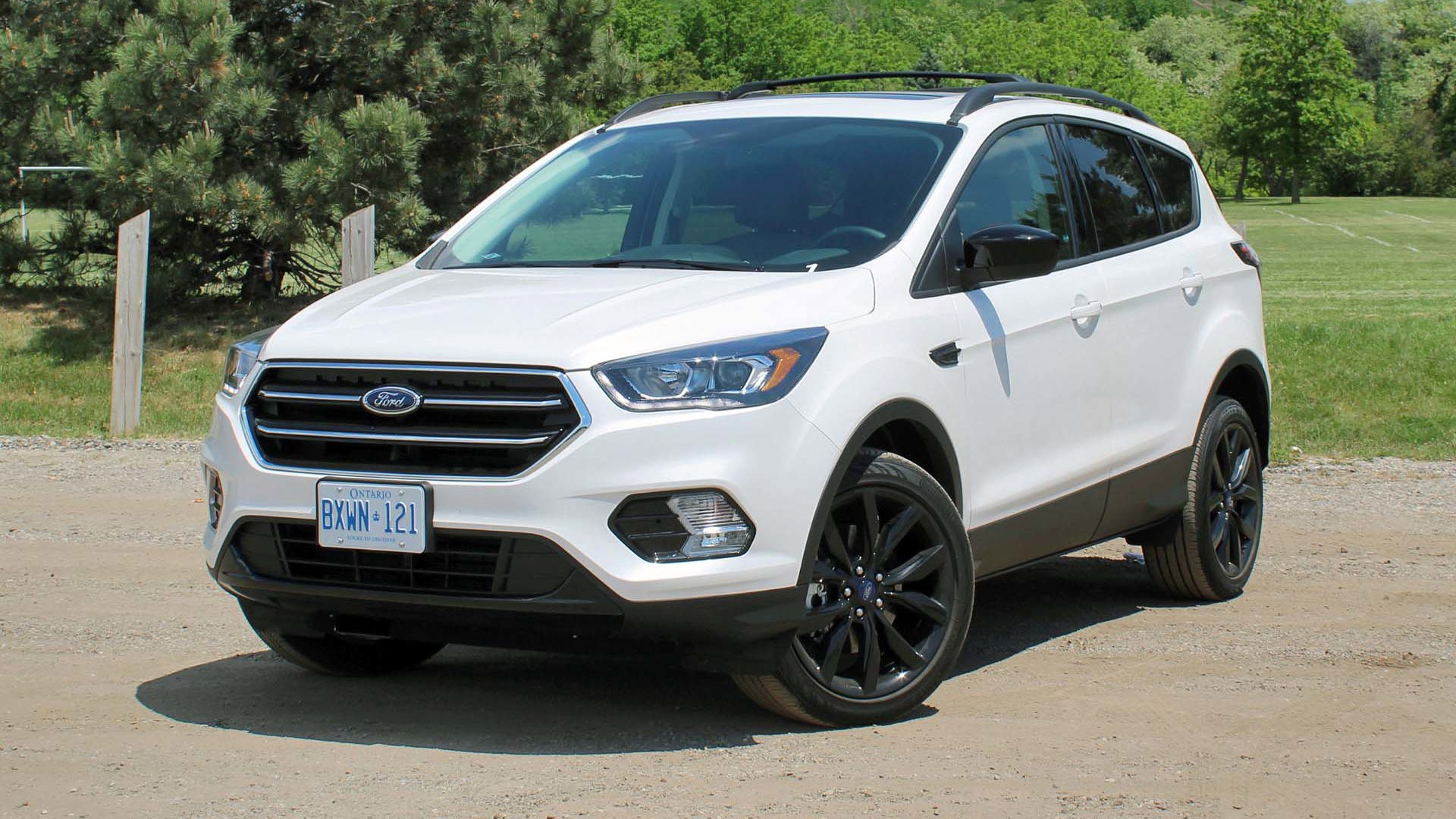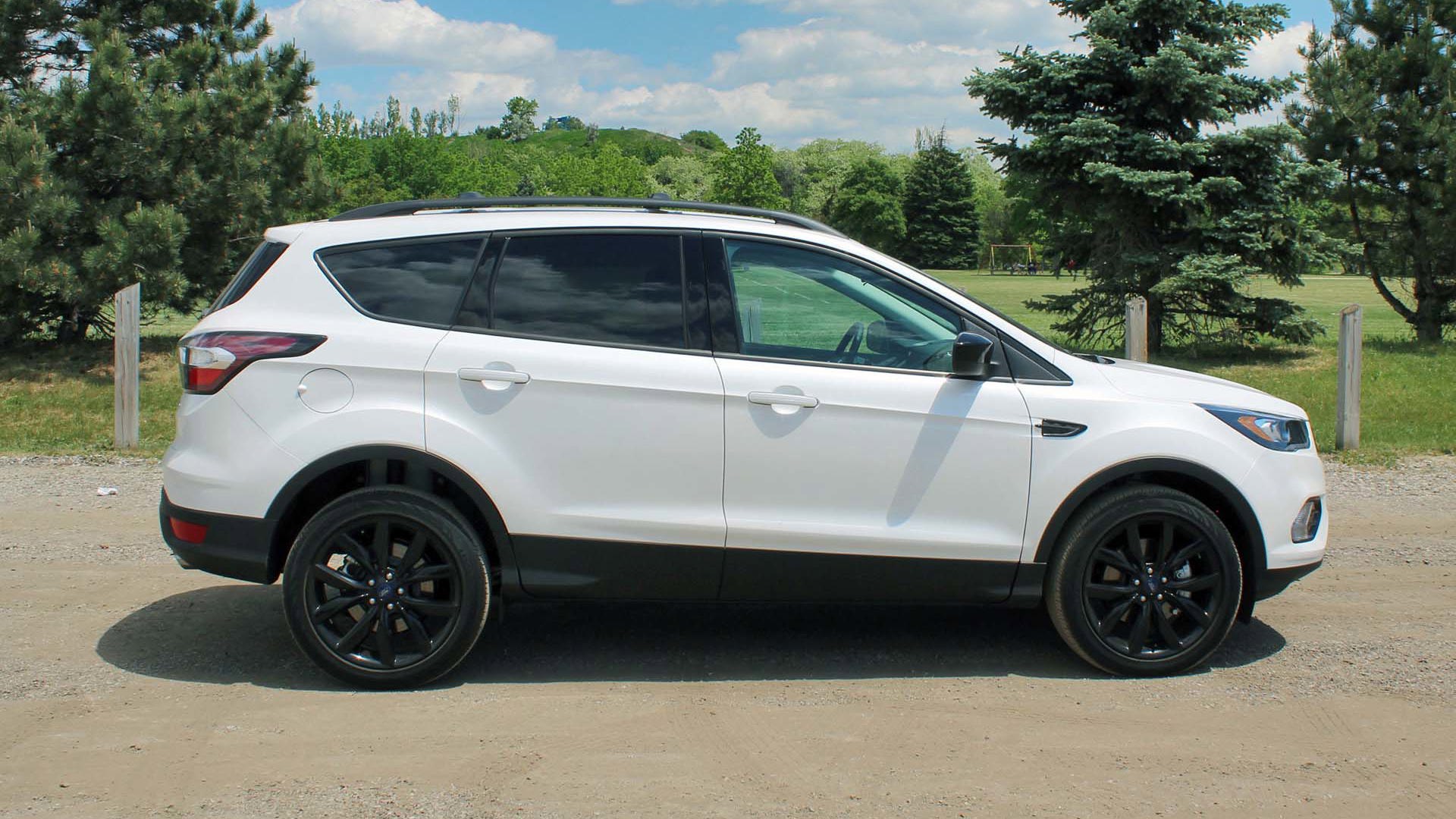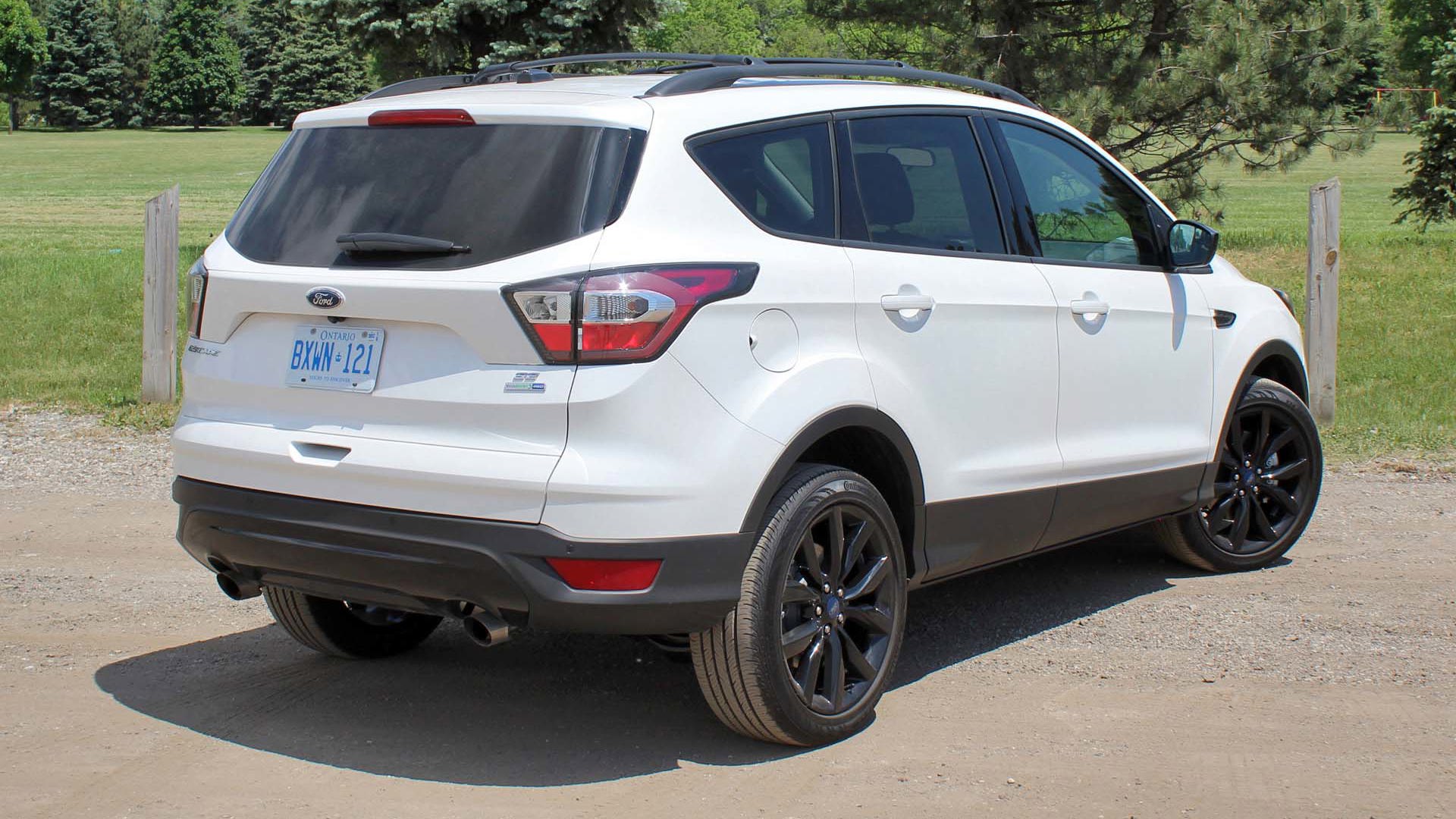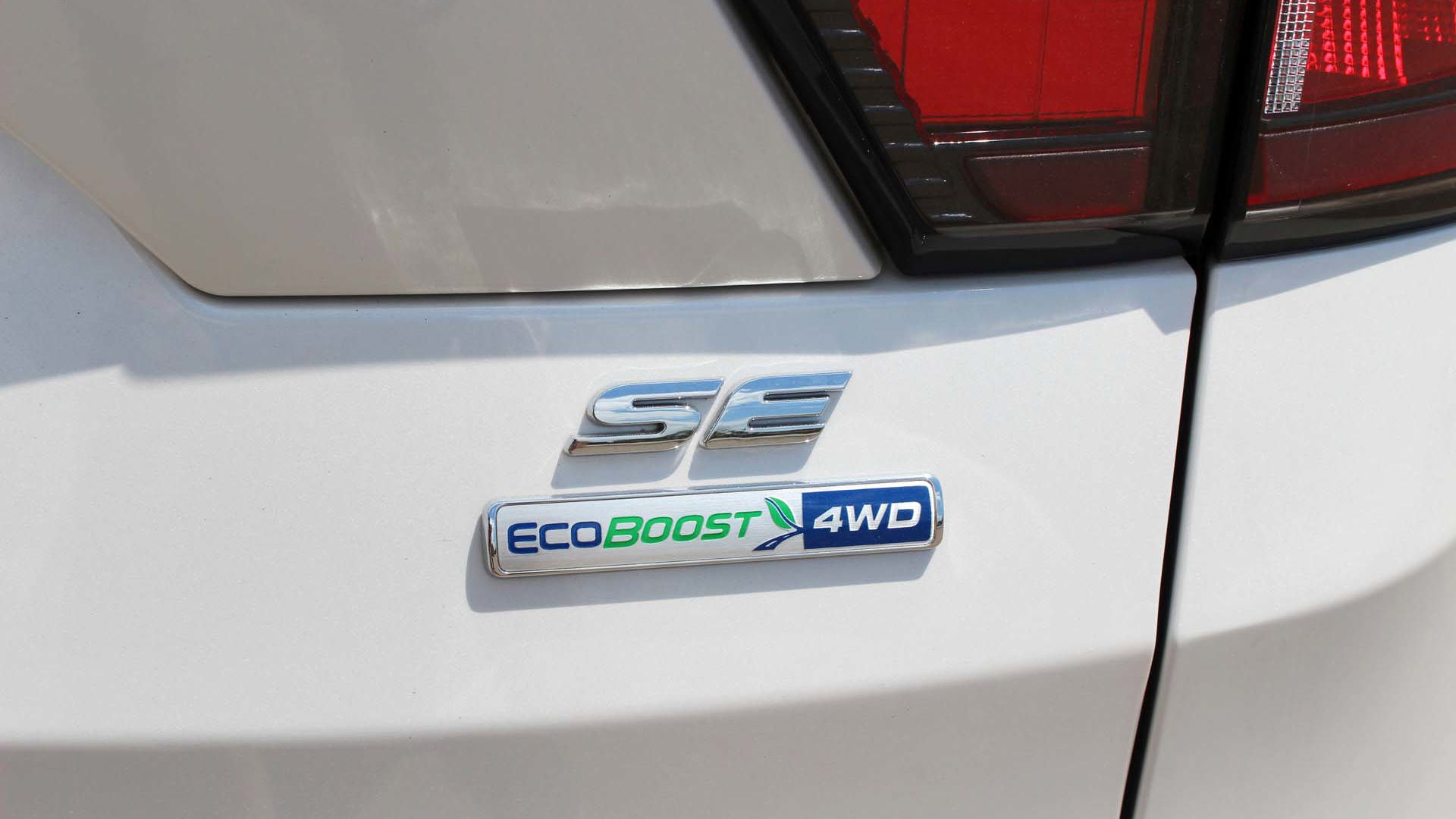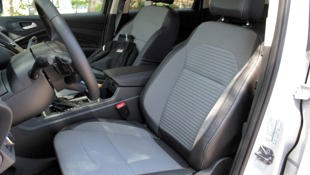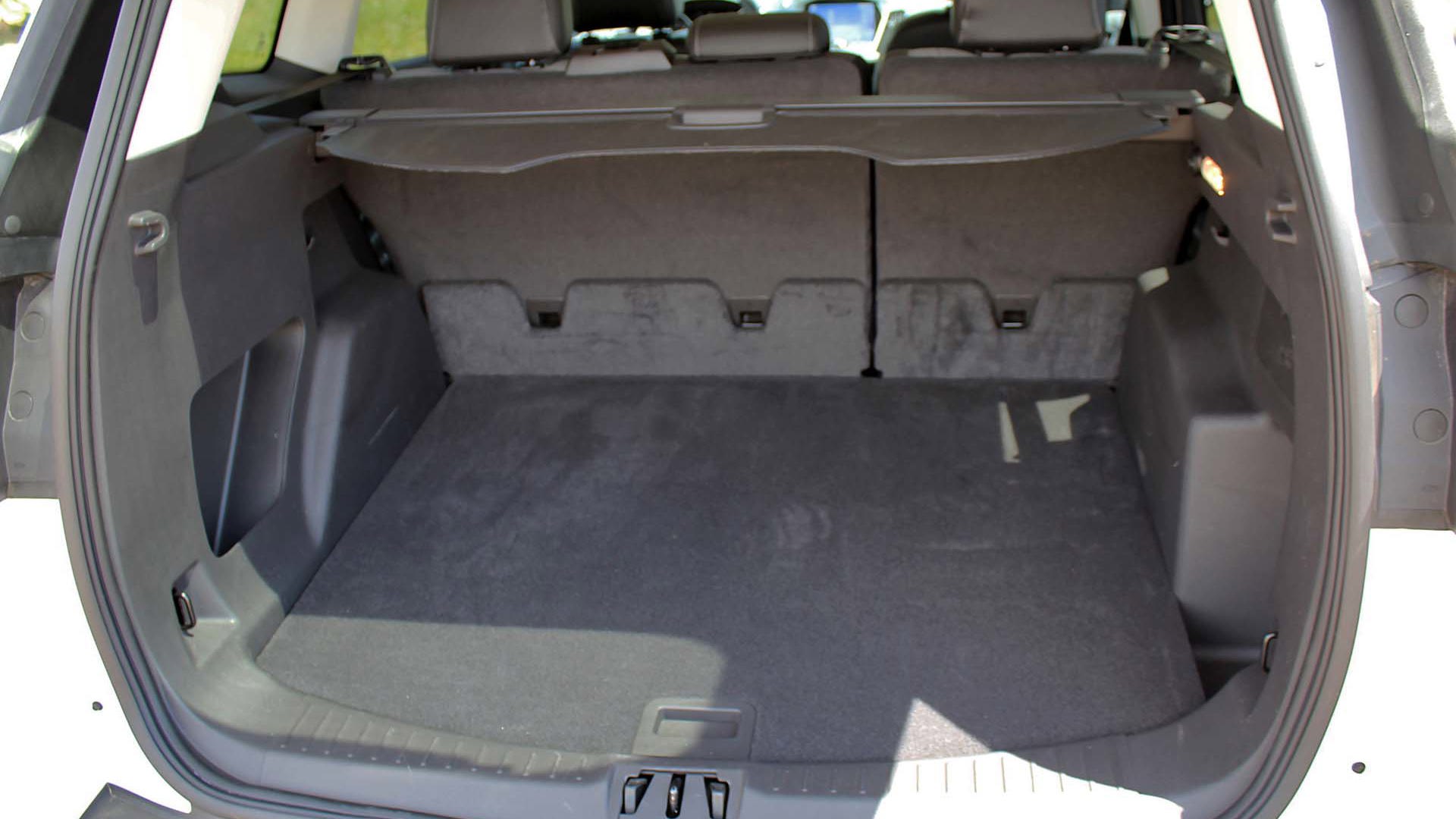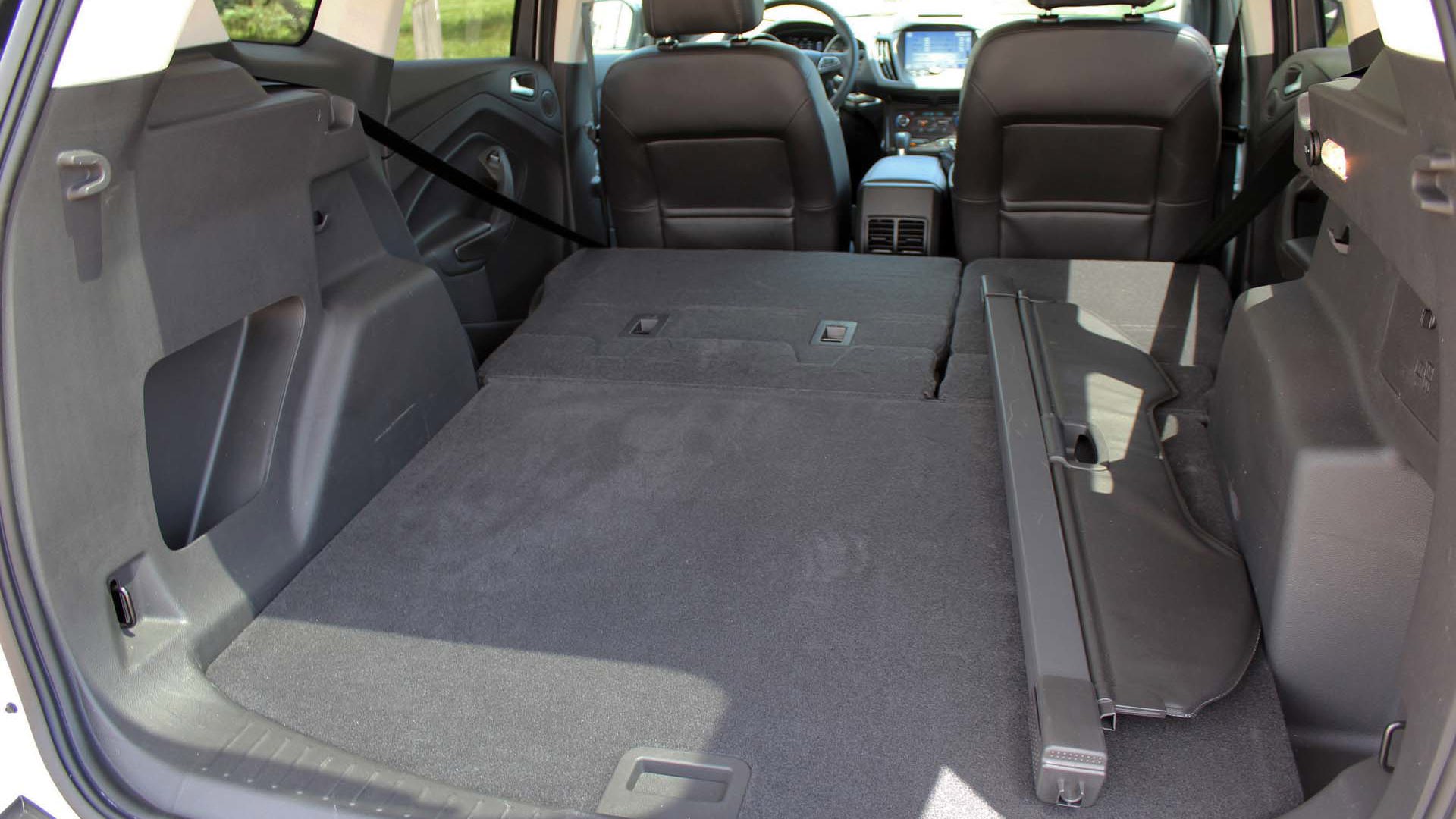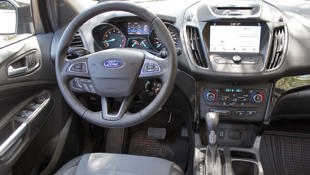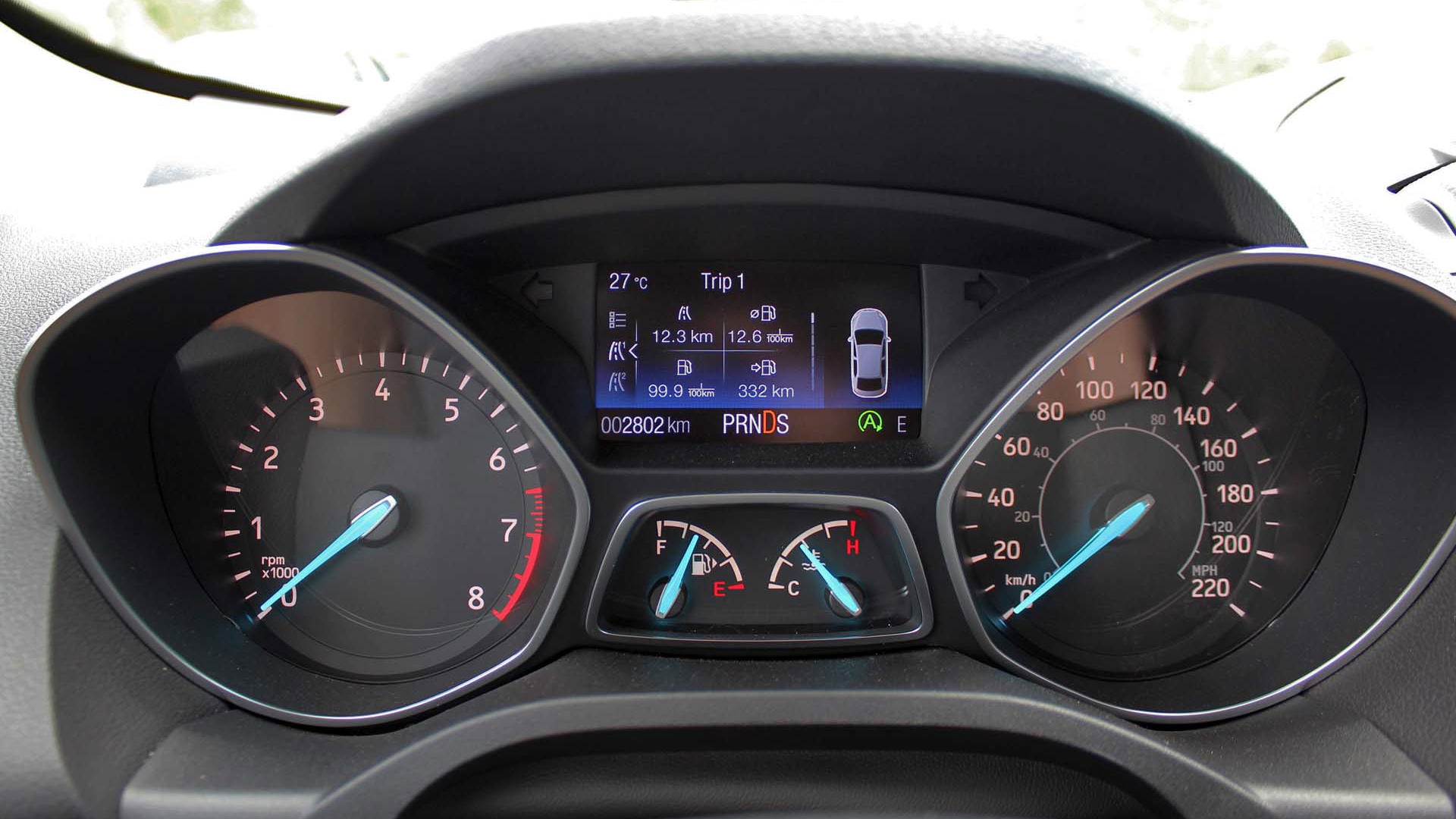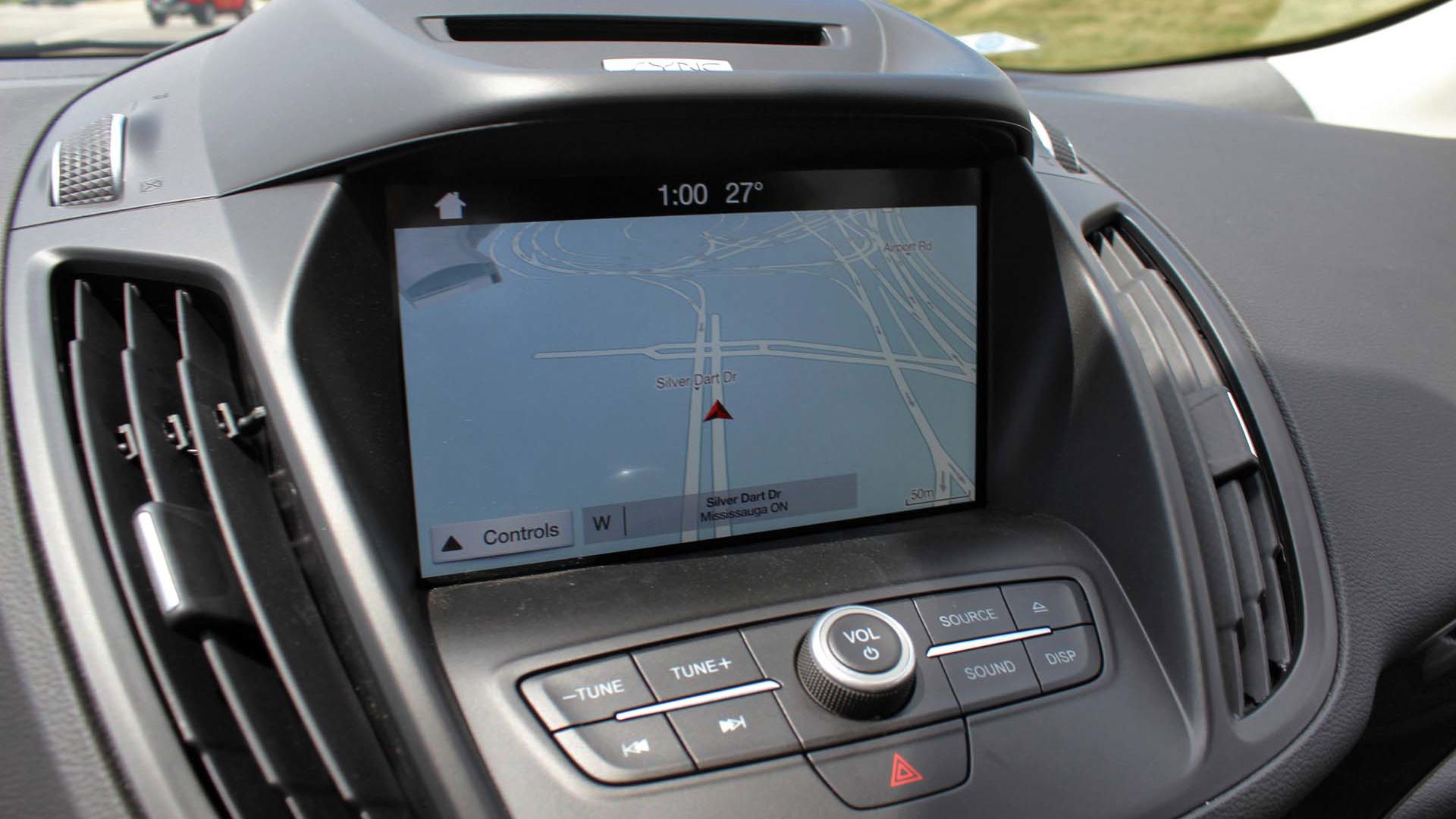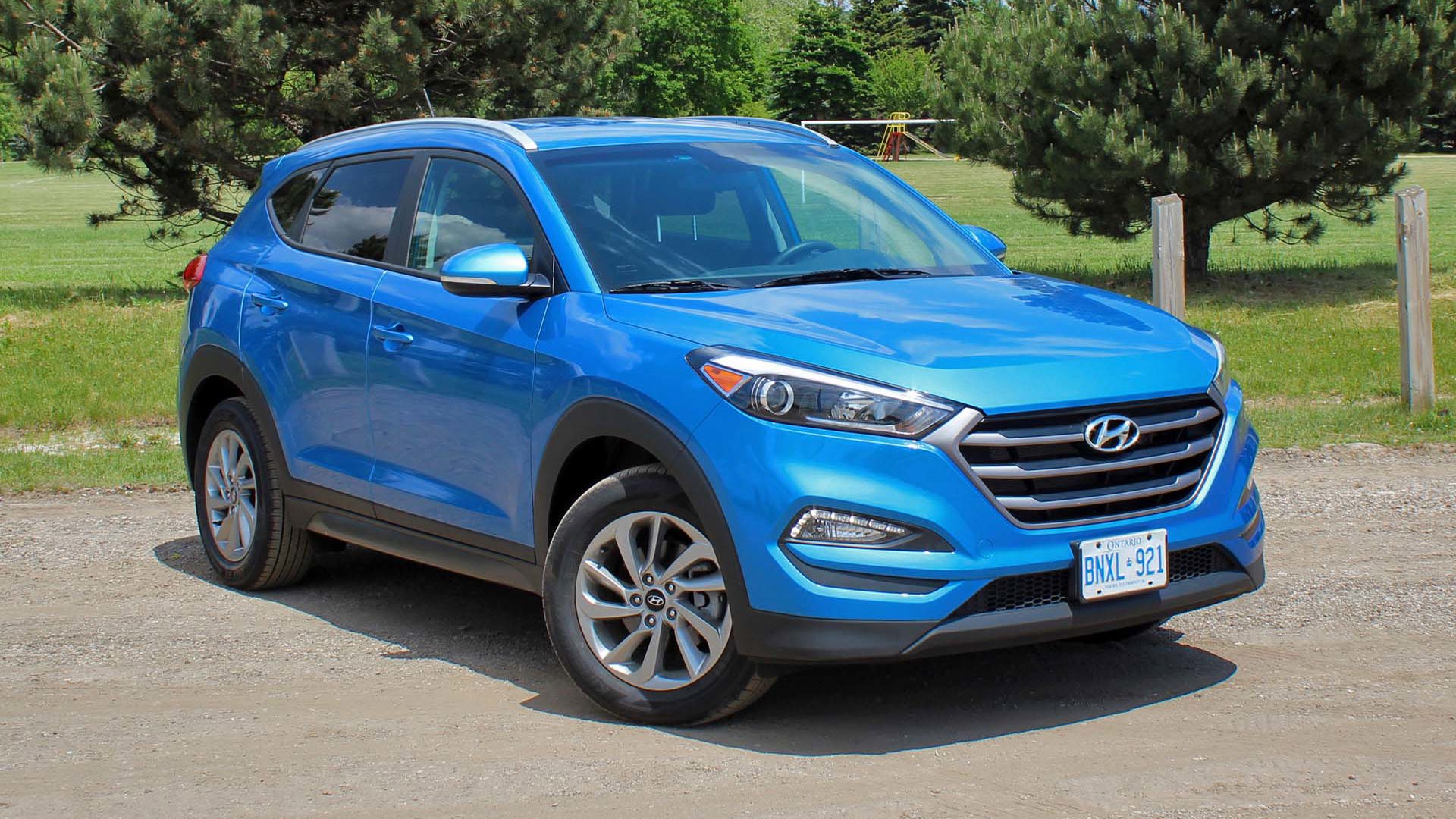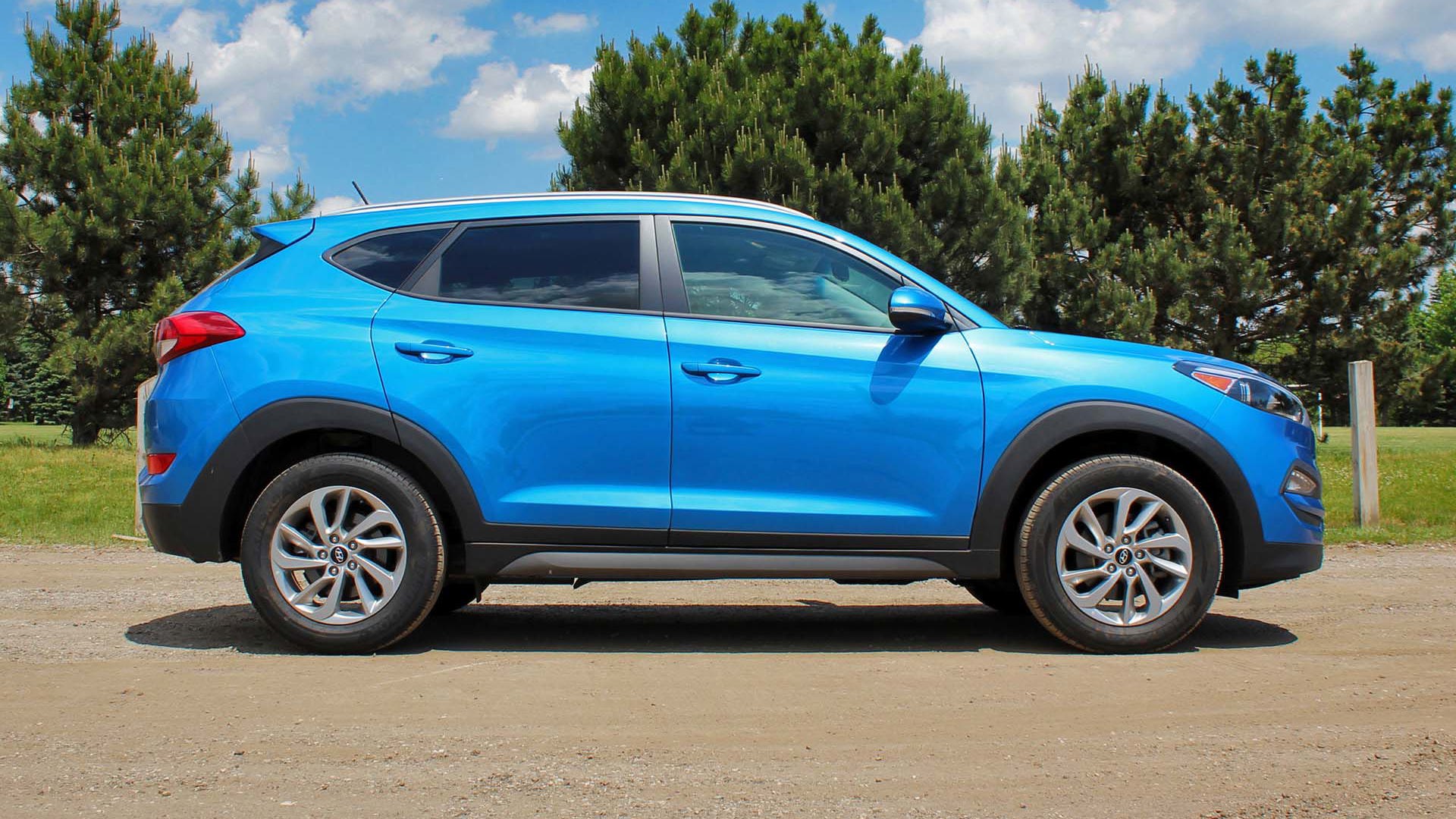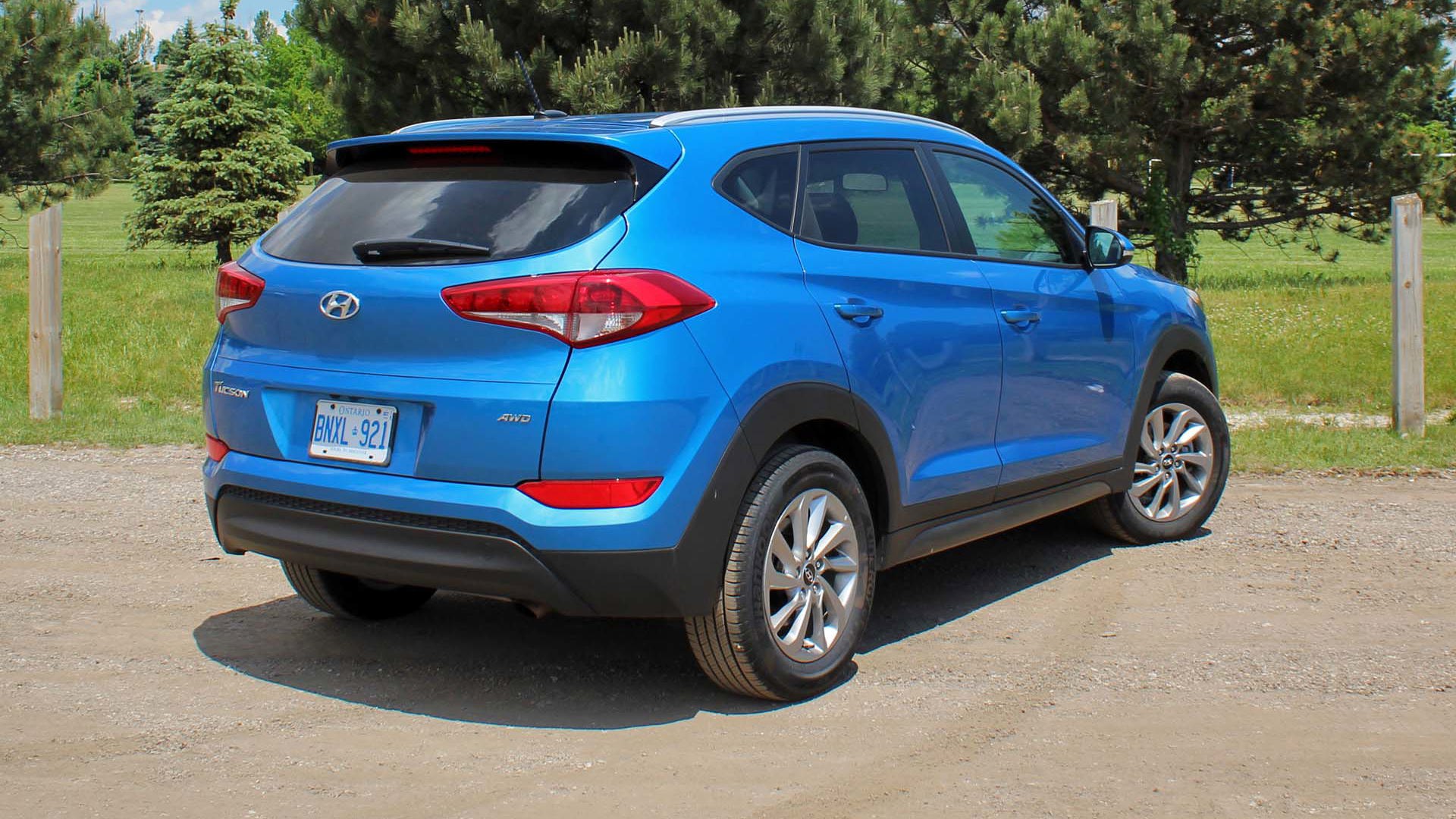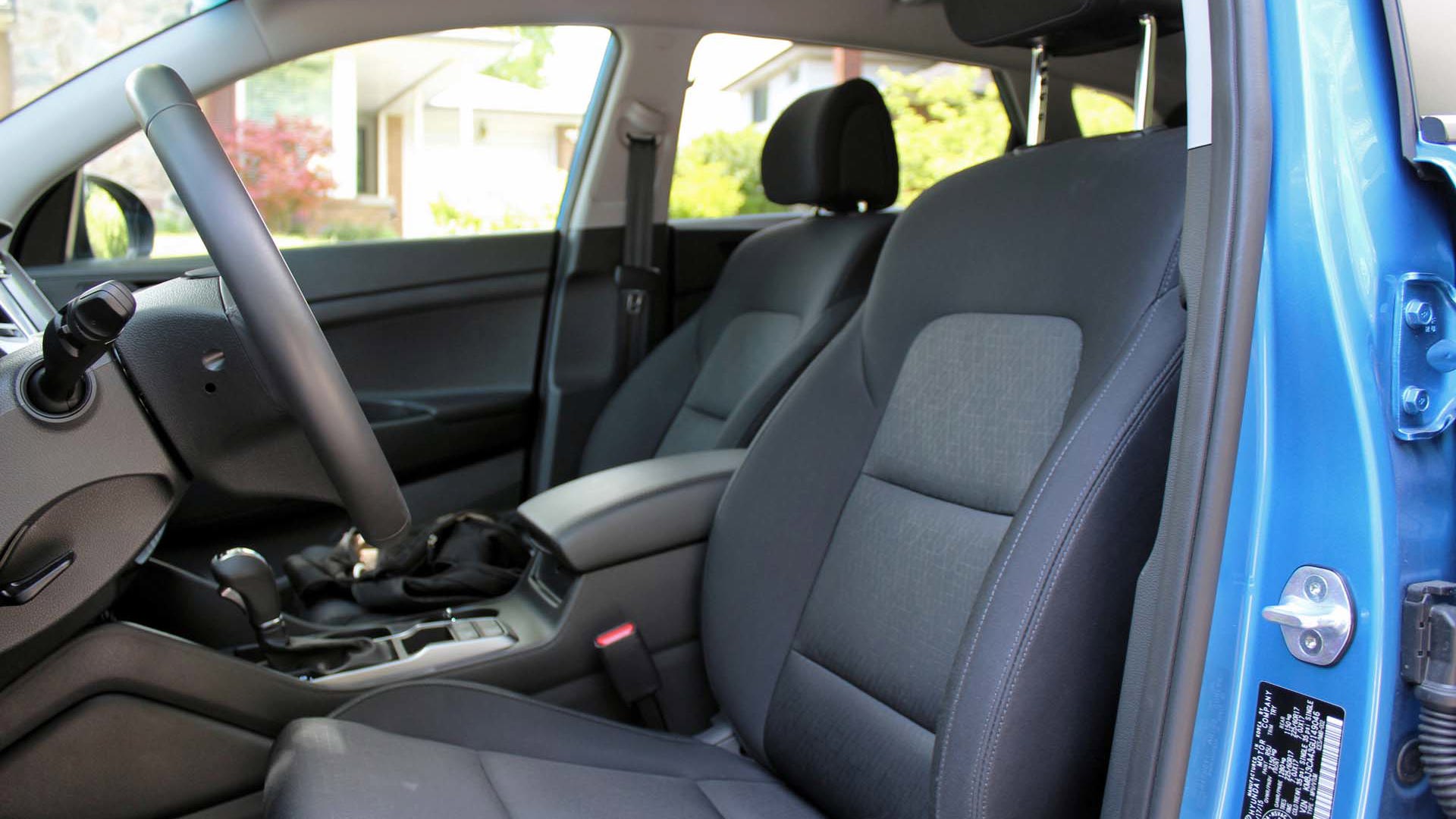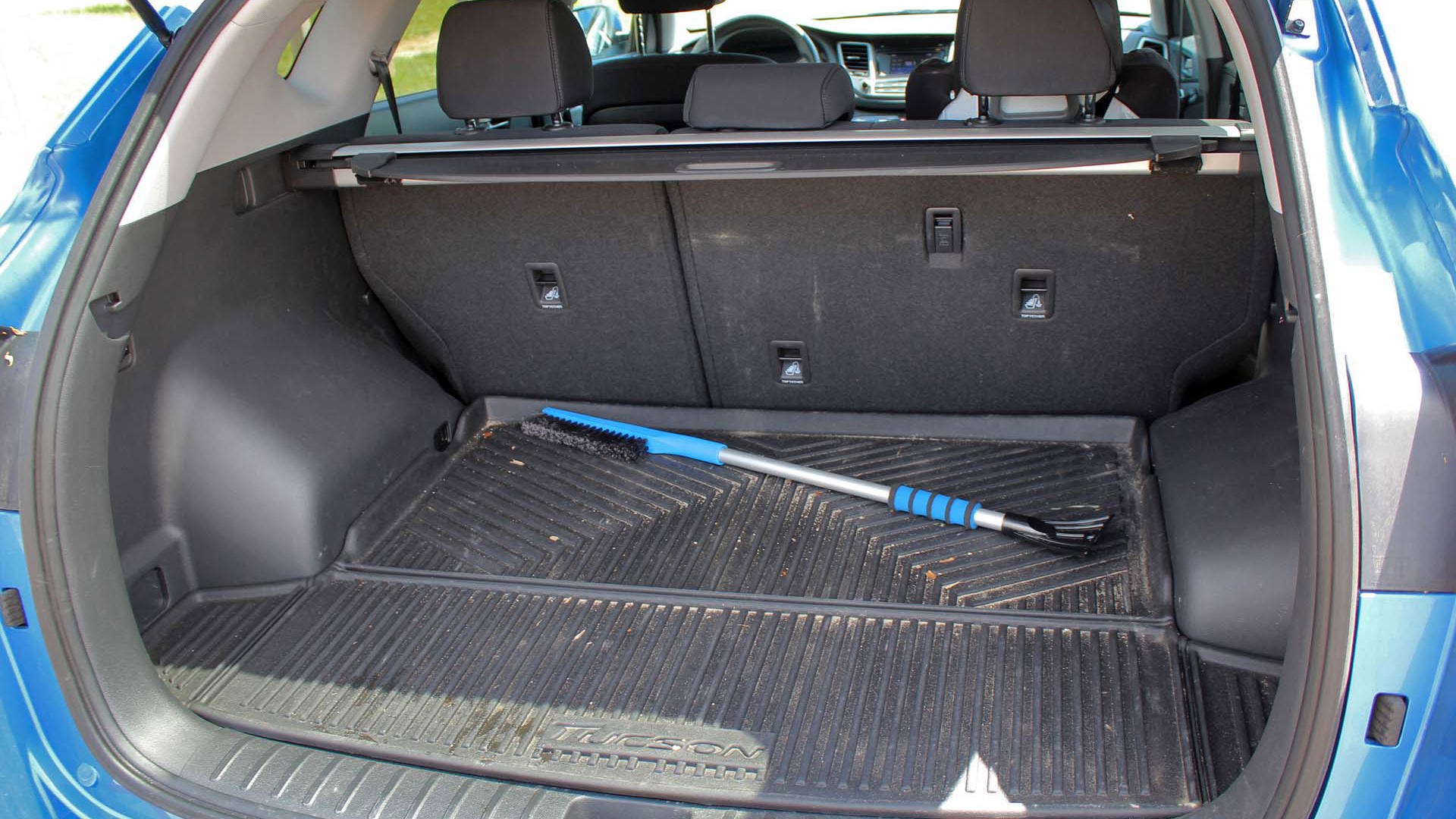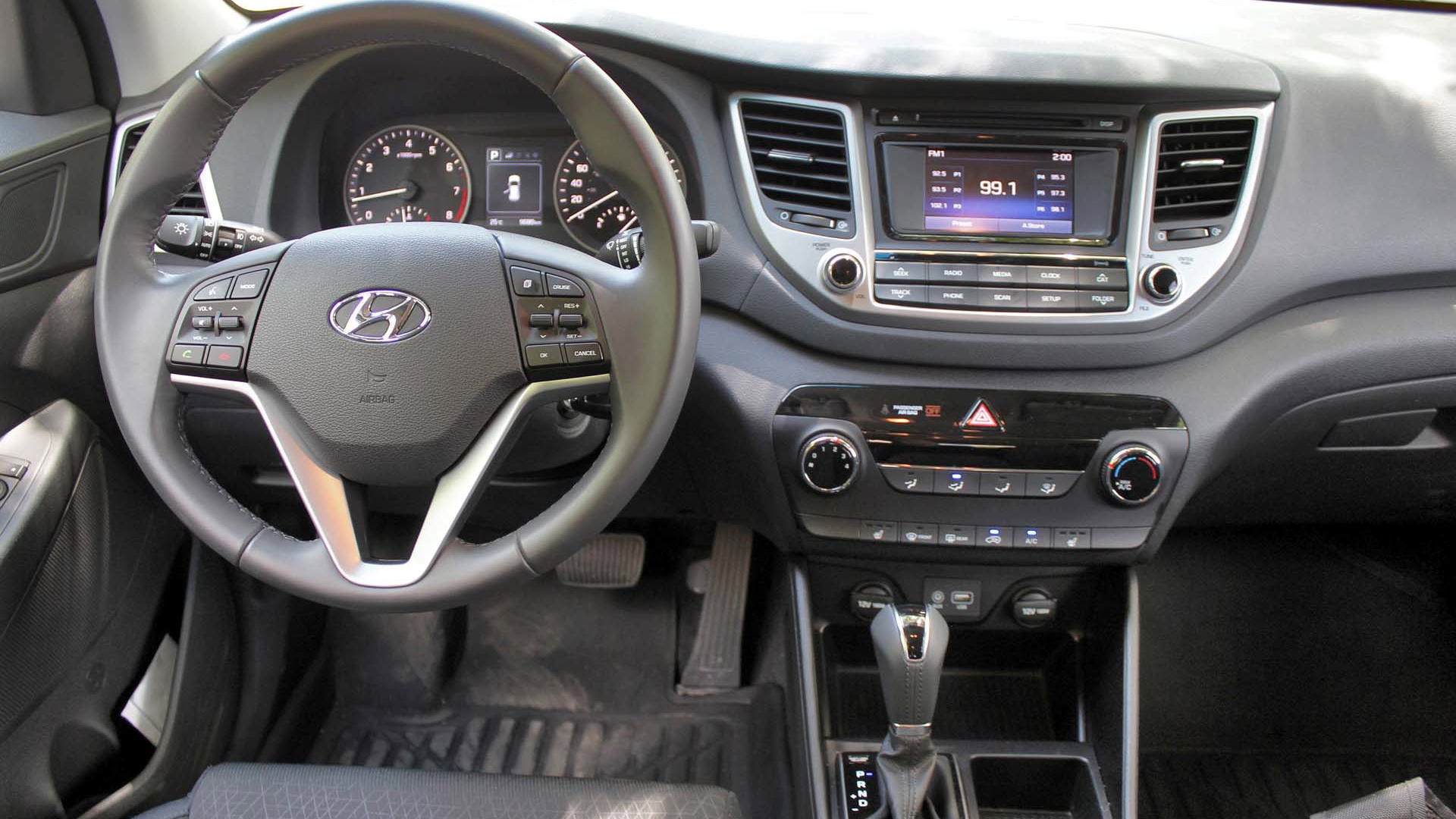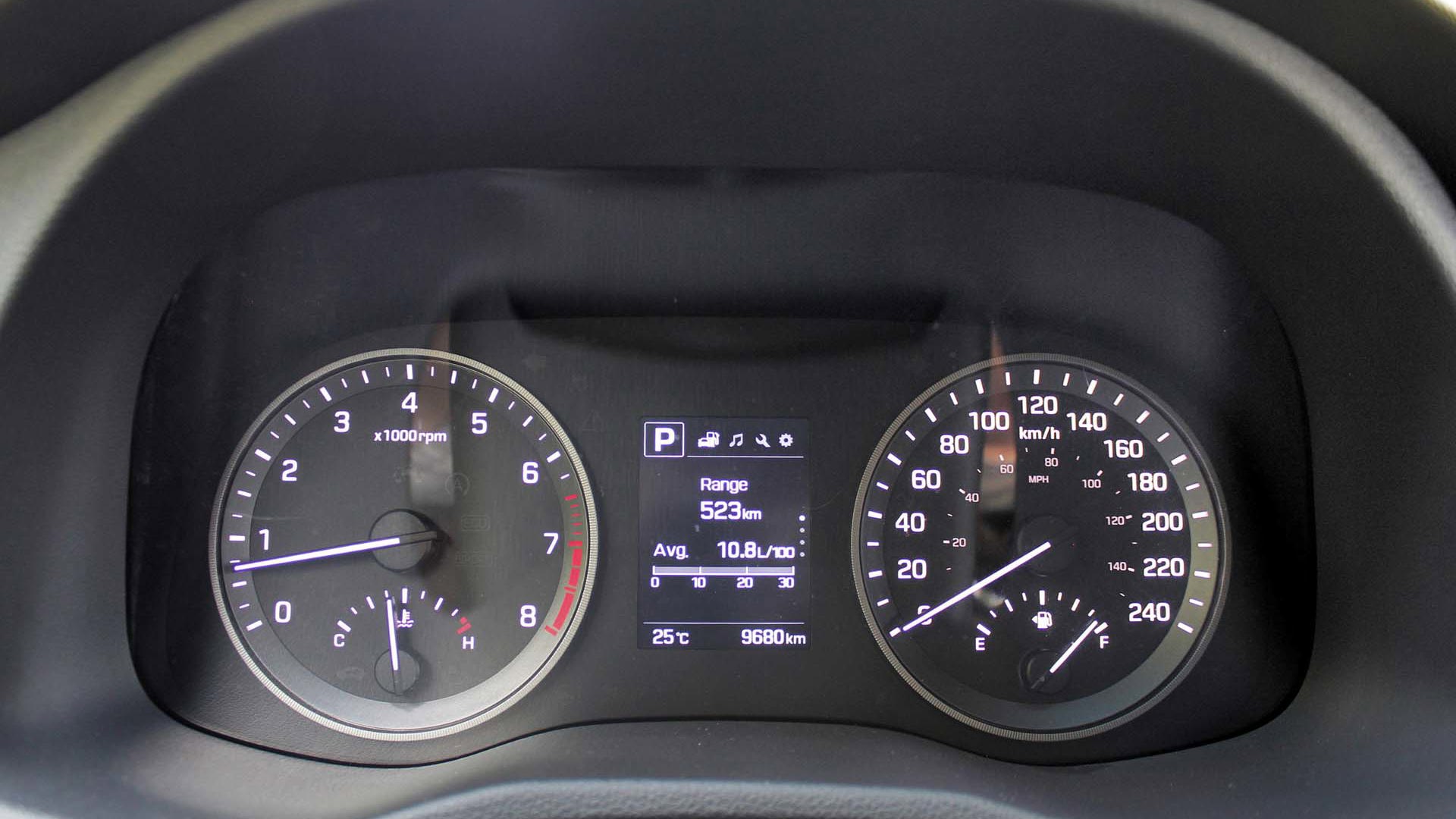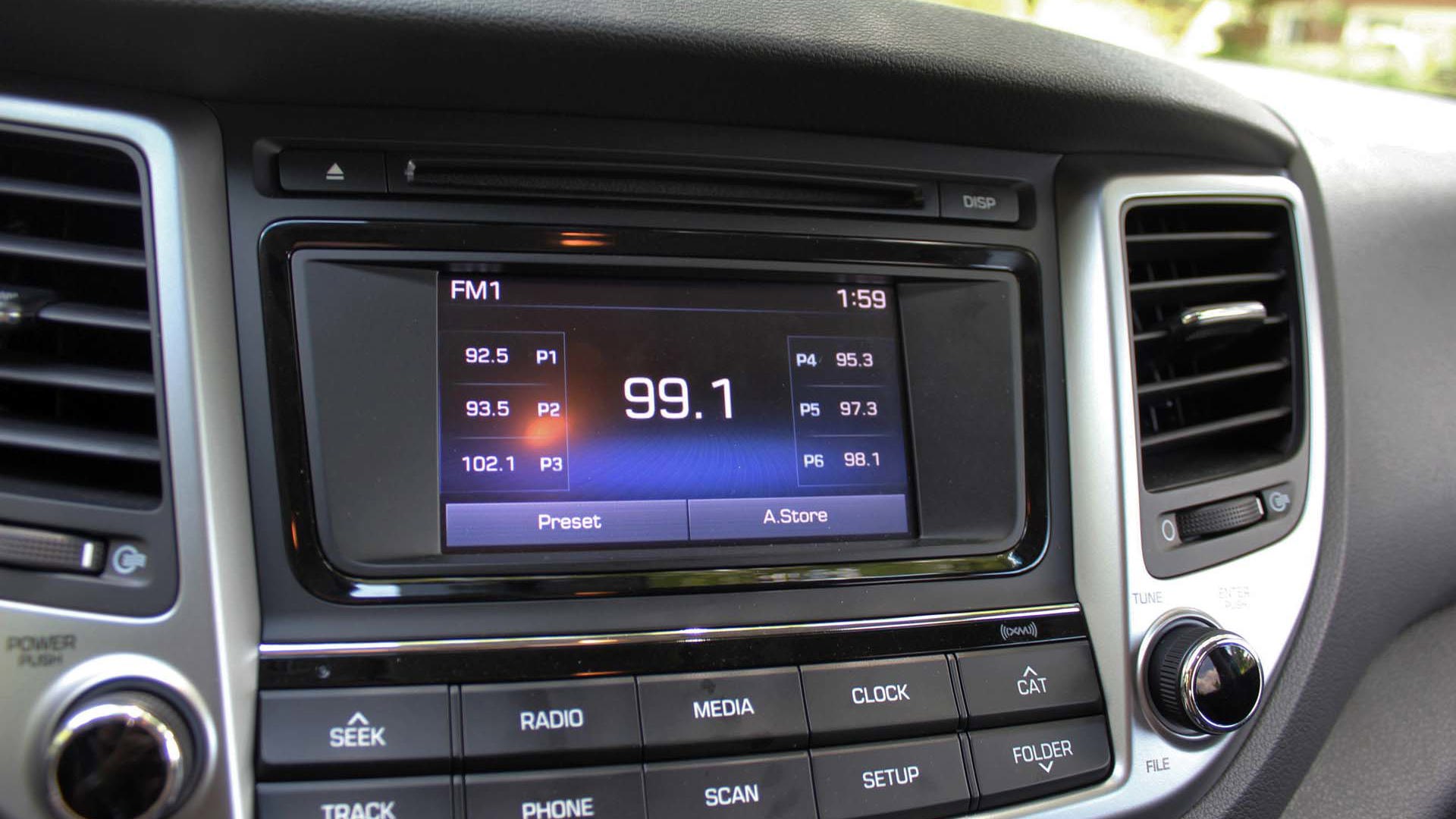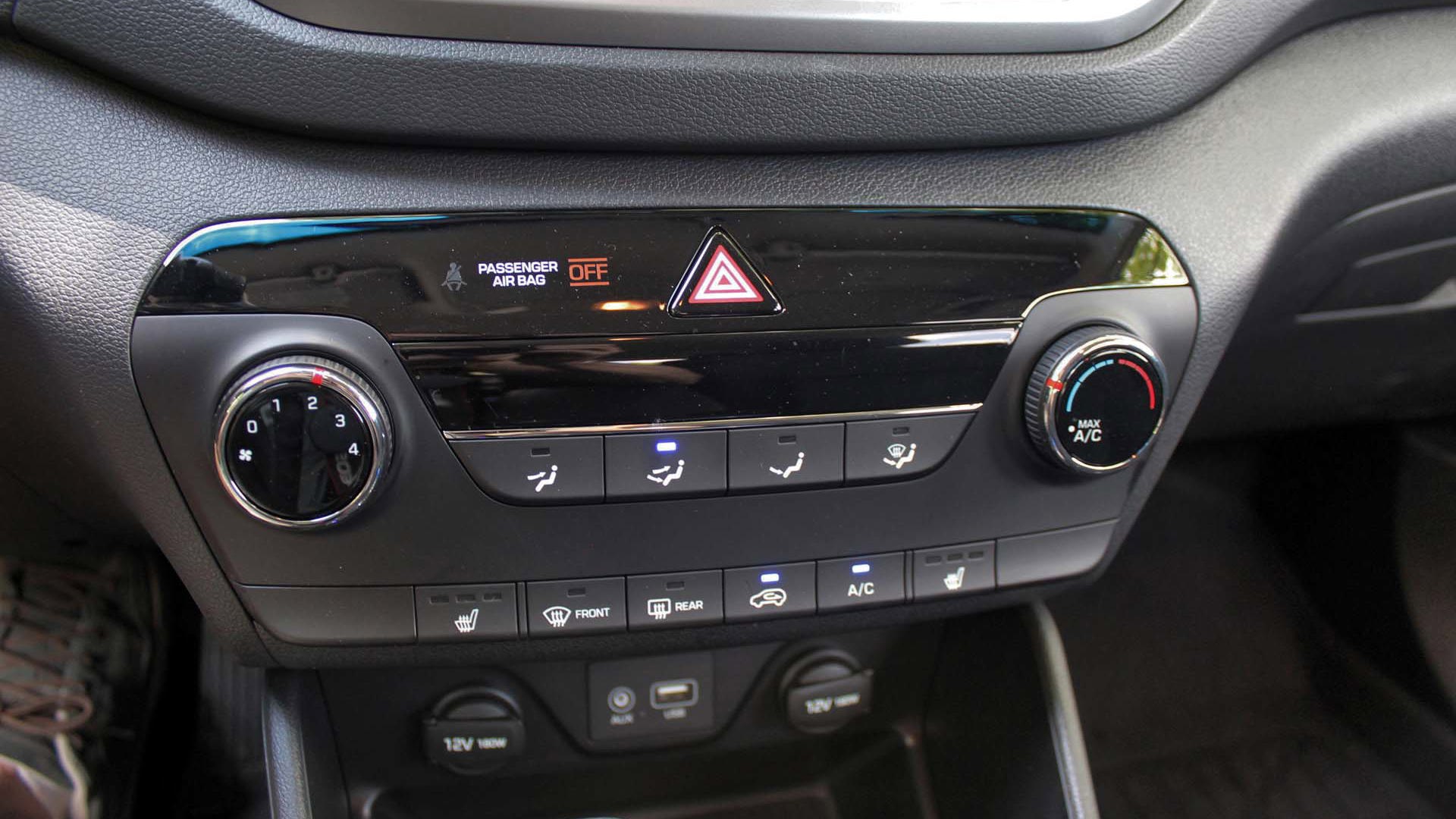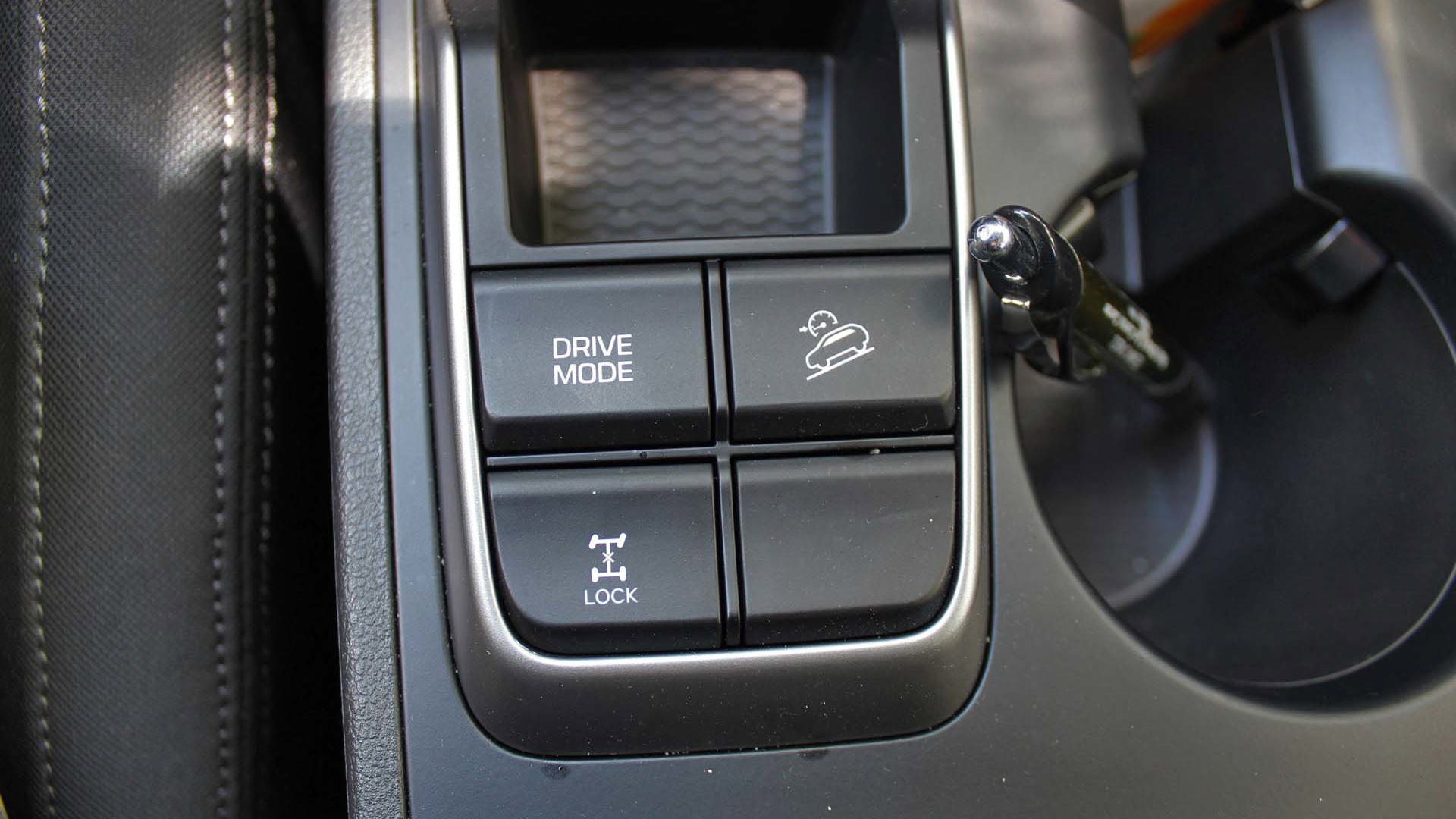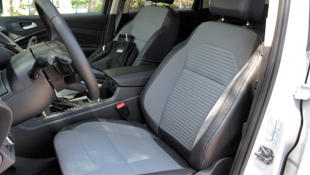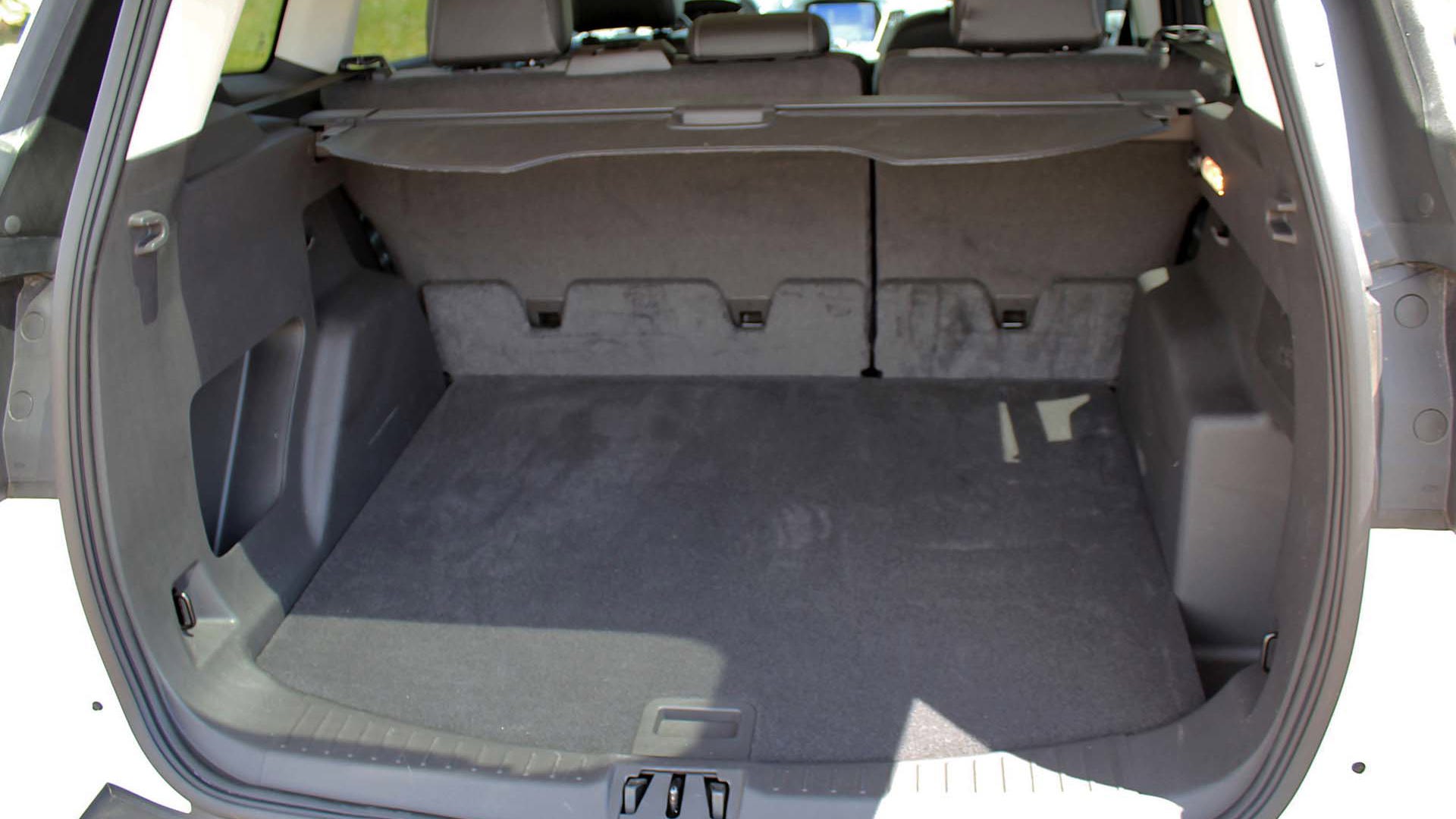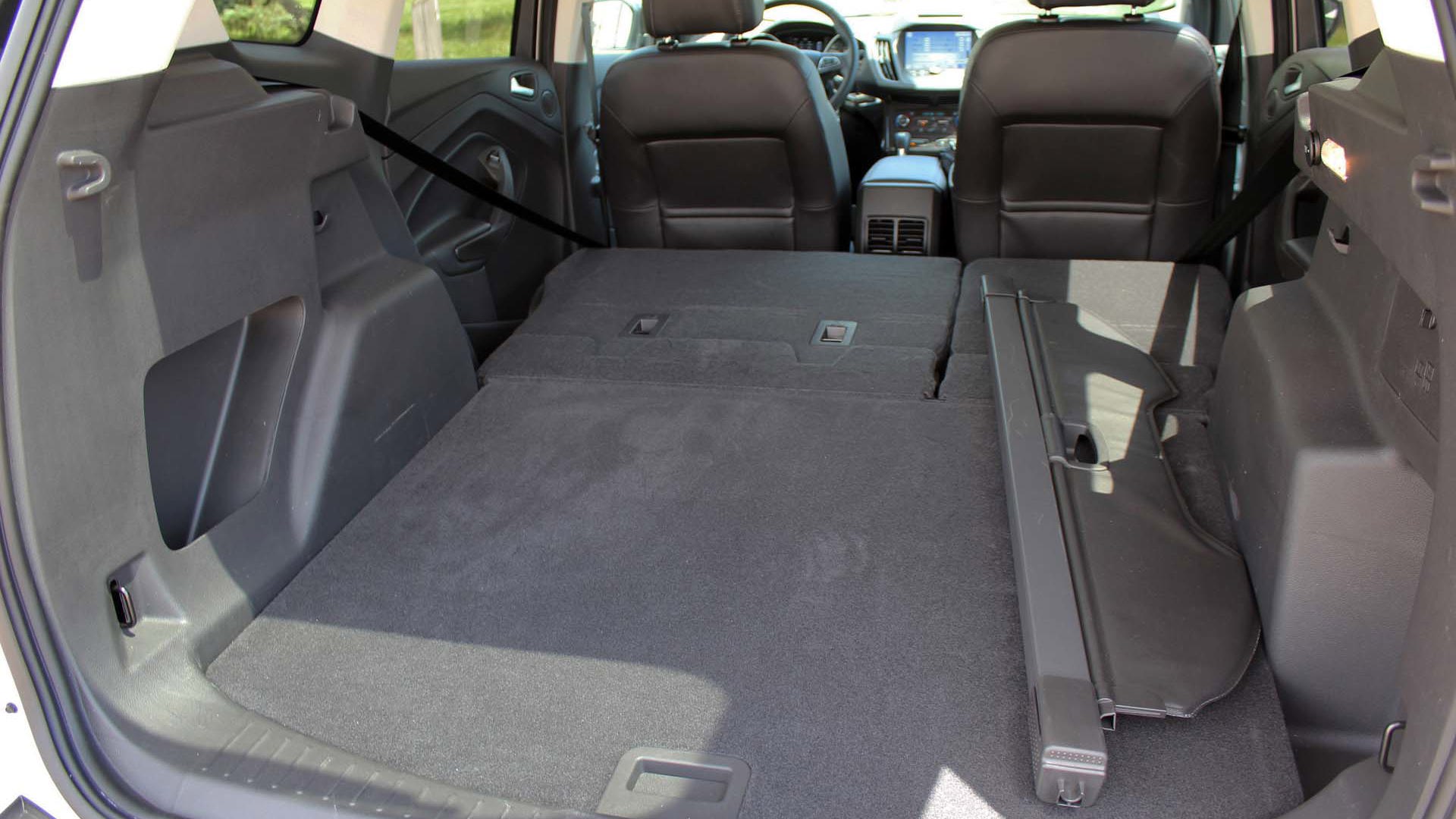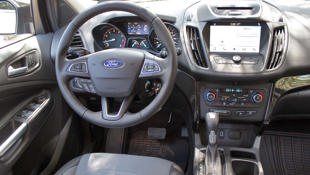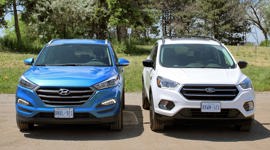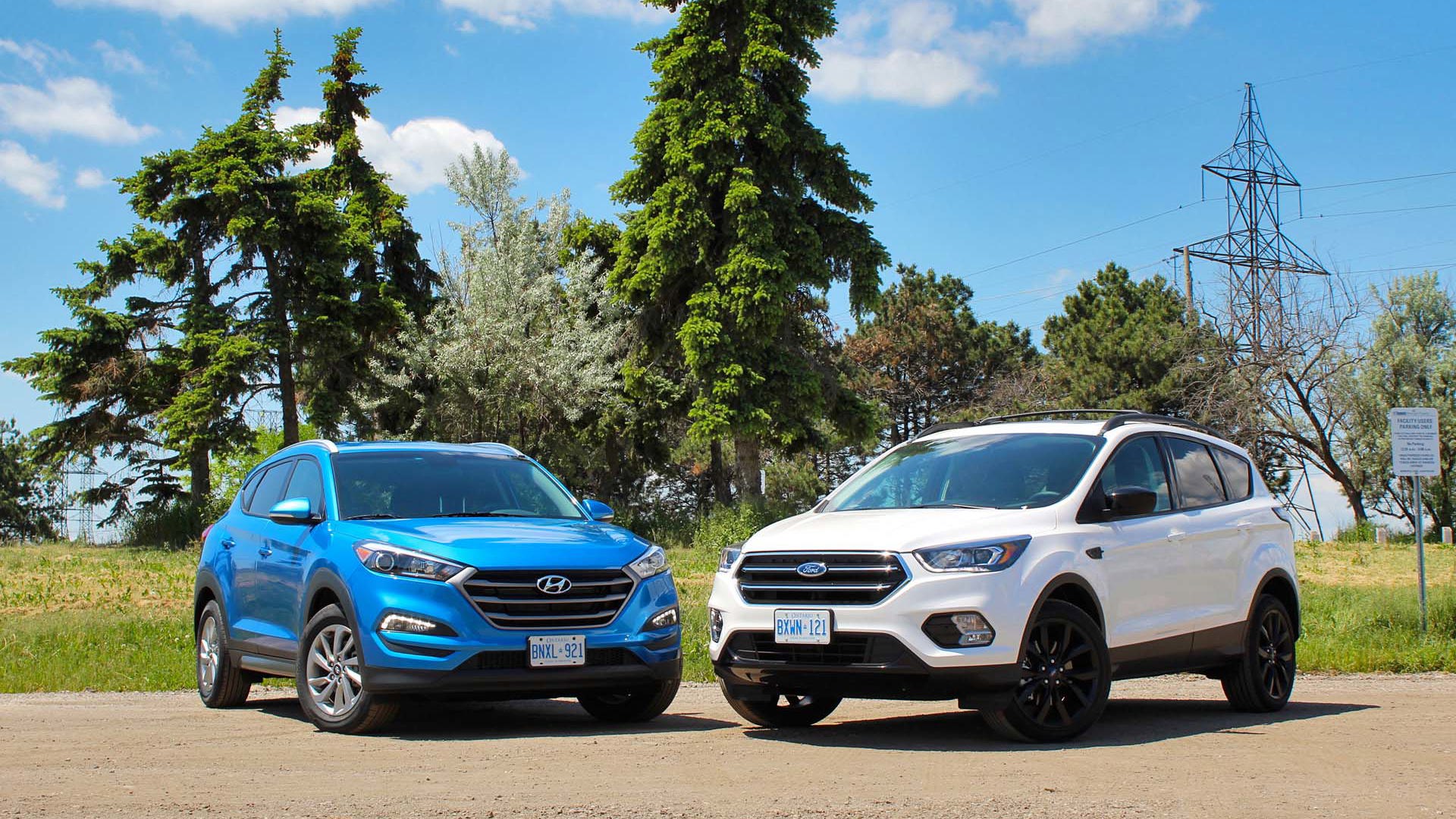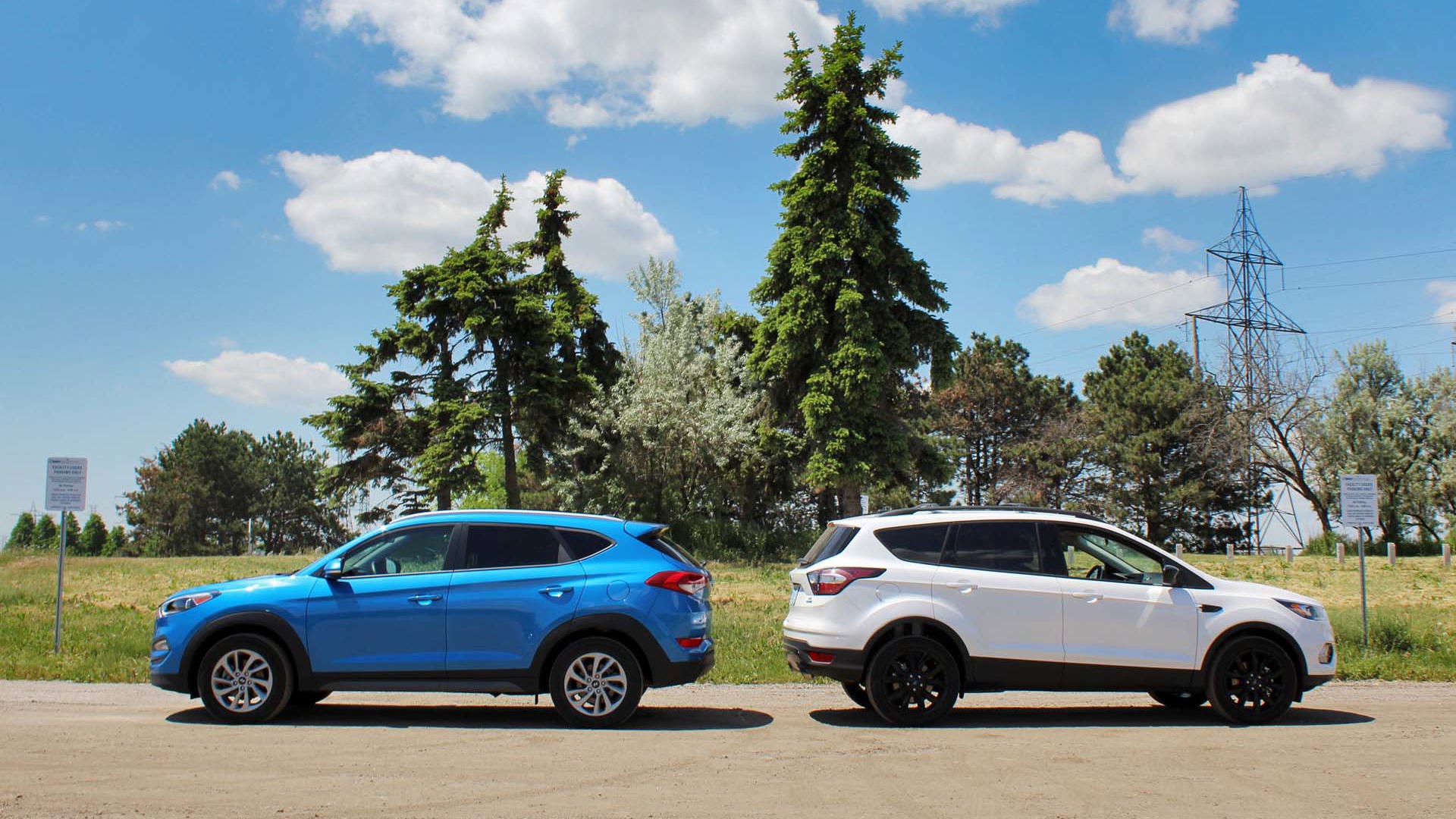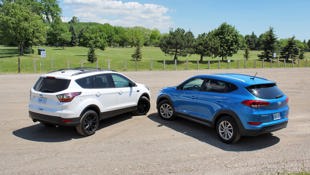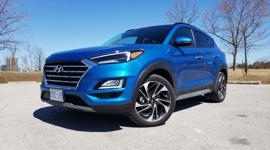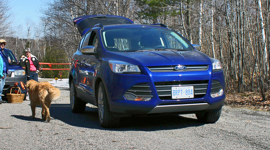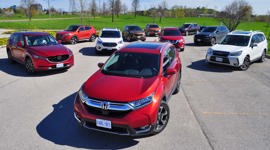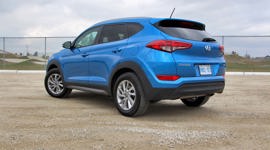Comparison Data
|
Base Price
$28,999
|
$29,399
|
|---|---|
|
Optional Equipment
None
|
White platinum metallic tri-coat $550; Equipment Group 201A (SE Convenience Package, rear park sensors, roof rails, Sync 3, tonneau cover, power 10-way driver seat, Sync Connect); power liftgate $500; twin panel moonroof $1,750; all weather floor mats $150; voice activated touch screen nav $800; roof rail cross bars $150; SE Sport Appearance Package (leather wrapped steering wheel, 19-inch black alloys) $1,500
|
|
A/C Tax
$100
|
$100
|
|
Destination Fee
$1,795
|
$1,690
|
|
Price as Tested
$30,894
|
$38,139
|
When it comes to pickup and crossover sales, Ford is a perennial chart-topper here in Canada. The F-150 pickup has been the best-selling overall vehicle since, like, forever, and last year the Ford Explorer was the top-selling seven-seat SUV. Similar story for the Escape compact crossover.
Here’s a market indicator – for the latter portion of 2015, Canadian SUV and crossover sales overtook car sales for the first time.
And here’s a market indicator – for the latter portion of 2015, Canadian SUV and crossover sales overtook car sales for the first time.
Never one to drop the ball, Ford has given its Escape a refresh for the 2017 model year. Here it faces off against the reimagined 2016 Hyundai Tucson that has gained size, style, refinement and substance. It’s also gaining chart positions, moving up the field in a bid to challenge the heavy-hitting Escape, Toyota RAV4, Honda CR-V and Nissan Rogue.
The 2017 Ford Escape comes to us in SE AWD trim with a starting price of $29,399. Its 179 hp, 177 lb-ft 1.5L EcoBoost four-cylinder replaces last year’s 1.6L, and fuel-saving auto start/stop is standard. Our 2016 Hyundai Tucson is the Premium AWD model at $28,999. It runs with a naturally aspirated 2.0L four making 164 horsepower and 151 lb-ft of torque. Both CUVs use a traditional six-speed auto.
Exterior Design
The Escape gets spruced up with a new hexagonal grill and sharper headlights – a look more in keeping with big-brother Edge. New fog lamps flank a lower air intake, and turbo models get active grill shutters for improved aero. Out back we see fresh taillights. Dressing up our white tester is the $1,500 SE Appearance Package that adds slick 19-inch black alloys, smoked lamp bezels and black body trim. The overall shape of the Escape is wearing well, and with these updates it remains a sharp looking rig, sitting on the road with purpose and class.
The Hyundai Tucson arrives in a resplendent in a striking shade of blue, and its hexagonal grill appears to be cut from the same template (albeit larger) as the Escape’s, all gaping and angular. The Tucson’s headlights are more dramatic, sweeping back over the fenders, and the lower fog lights echo that cue. This is a well-resolved design with elegantly sculpted flanks, a prettier face and a more flowing greenhouse. Even on these standard 17-inch alloys the Tucson looks a bit sexier than the Escape, so I’m giving the nod to the Hyundai here. But it’s a close one. These two really could be siblings.
Interior Design
The 2017 Escape gets a relocated shifter and electronic parking brake, making room for new cup holders and cubbies. There’s a redesigned steering wheel too. We like the Escape’s bright and colourful central gauge display, 8.0-inch touchscreen and bold interior architecture. Ergonomics make sense and the driving position is spot on. The low front cowl makes for fine forward vista although the thick A-pillars can obstruct cornering views. These digs are built to a high standard.
The Tucson’s cabin is more conservative, yet as with all Hyundai products of late, its ergonomics prove the automaker understands how humans relate to machines. There are plenty of clearly marked hard buttons and rotary controls. Storage cubbies abound, and the interior’s tight panel gaps show an impressive attention to detail, even if the plastics are mostly of the hard variety. Another nicely done interior, but this contest goes to the Ford for its more interesting design, bigger screen and clearer graphics.
What Features Do We Get for Our 30 Large?
We’re used to Koreans laying on the kit, and here the Tucson doesn’t disappoint. Notable entries are heated rear seats, standard leather-wrapped steering wheel, side rail roof rack, hill-descent control, four-wheel lock, blind spot detection with rear cross-traffic alert and lane-change assist – none of which shows up in the base Escape SE AWD.
Ah, but it’s not a slam dunk for the Tucson. The Hyundai makes do with manual temperature control while the Escape gets dual-zone auto climate control. And the Tucson’s 5.0-inch infotainment screen looks puny compared to the Escape’s Sync 8.0-inch screen. The Ford also gets paddle shifters and brake-based torque-vectoring.
While the Hyundai came to us with no optional equipment, the Ford was loaded up with just over $7,000 worth of upgrades, getting such goodies as panoramic sunroof, powered lift gate, powered seats, rear park assist, Sync 3 with navigation and roof rails. This made for a nicely complete package.
However, the win here goes to the Tucson for its standard niceties like leather steering wheel, heated rear seats (the kids will love you) and such safety systems as blind-spot detection and rear cross-traffic alert.
On The Road
This is where these two cute-utes take divergent paths. With its turbo power and 19-inch wheels, the Escape is all sporty and edgy to the Tucson’s more sedate and considerably smoother comportment.
If you like to tickle the shift paddles, feel the surge of lowdown torque and cut cleanly through the corners, the Escape is for you. It’s an alert little thing that blends a dash of Euro-dynamics with practical functionality. The brakes bite with security, showing a more positive feel than the slightly mushy binders found in the Hyundai. But the tradeoff is a busy ride (blame the low-profile 19-inch tires) and a lurchy drivetrain that goes from off-boost high-gear fuel-saving mode to… wait for it… lower gear, turbos spinning, here we go!
Yes, the Ford will leave the Hyundai in its dust in both a drag race and a back-road blast, but we found the Tucson to be the more relaxed drive. The ride was smoother and cabin impressively quiet. The 2.0L engine and tranny deliver the goods in a linear fashion – no gear hunting or turbo lag.
Hyundai has been burning the candle at both ends when it comes to polishing refinement and dynamics. Time was, it was a given we’d be whinging about weird, disconnected steering and clumpy, floaty ride.. Happy to say, this new Tucson exhibits none of that – just rock solid structure, greatly improved steering and a fine balance between body control and ride compliance.
The fact that in-house hot-shoe [hot-shoe wannabe – Ed.] Jacob preferred driving the Tucson to the Escape speaks volumes. Is he going all soft on us? Just for that, the Tucson takes the W here.
Practicality and Flexibility
It boils down to the numbers here. Both CUVs have a split 60/40 second row that easily folds flat. However, the Ford is more roomy inside, being slightly larger and bragging a more boxy architecture. With the second row in place, the Ford Escape offers 962L to the Hyundai Tucson’s 877L. And with said seats folded, the Ford is considerably more cavernous.
That said, the Tucson’s back seats are more adult-friendly with their nicer contouring and deeper padding. But for ultimate hauling capacity, the Escape wins.
Fuel Economy
Official numbers for the 2017 Ford Escape SE AWD with 1.5L EcoBoost are 10.2 L/100 km city, 7.8 L/100 km highway and 9.1 L/100 km combined. The 2016 2.0L Hyundai Tucson Premium AWD counters with 11.0 city, 9.0 highway and 10.1 combined.
Our real-world testing produced markedly different results. Over a loop of mixed urban landscape that included a stretch of highway driving, the Hyundai Tucson returned 9.8 L/100 km to the Ford Escape’s 11.4 L/100 km.
Conclusion
There’s a reason why the Ford Escape has been a top segment seller. It’s stylish, roomy, well-built and drives with European flair. And now that the Escape is available with Ford’s vastly improved Sync 3 interface, it is an even more compelling choice.
But here, it loses out to the new Hyundai Tucson Premium AWD. The Hyundai is not flashy. It’s not fast and the interior lacks the Ford SE’s pizzazz. But its base price undercuts the Ford by $500, and for that we’re getting better fuel economy, a more pleasant driving experience and standard heated rear seats, leather-wrapped steering wheel and blind-spot detection with rear cross-traffic alert and lane-change assist.
There’s an underlying current of simplicity and goodness to this basic Tucson that wins us over. And to throw a little more gas on the fire, choosing the $36,649 2016 Hyundai Tucson 1.6T Limited (that still undercuts the as-tested price of our loaded Ford Escape SE) nets a 175-hp 195 lb-ft 1.6-litre turbo four, slick seven-speed dual-clutch transmission, leather, 8.0-inch touchscreen with navigation, heated steering wheel, heated rear seats, premium audio, power liftgate, 19-inch wheels… you get the picture.
